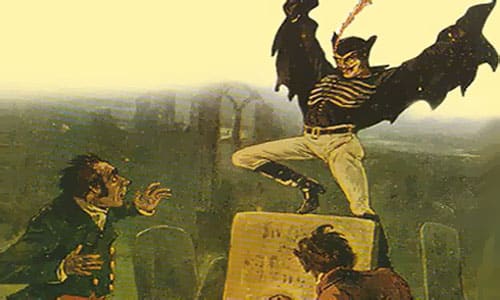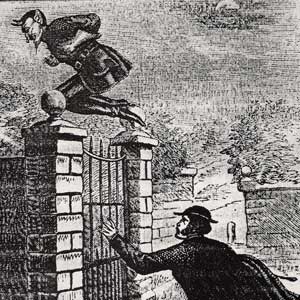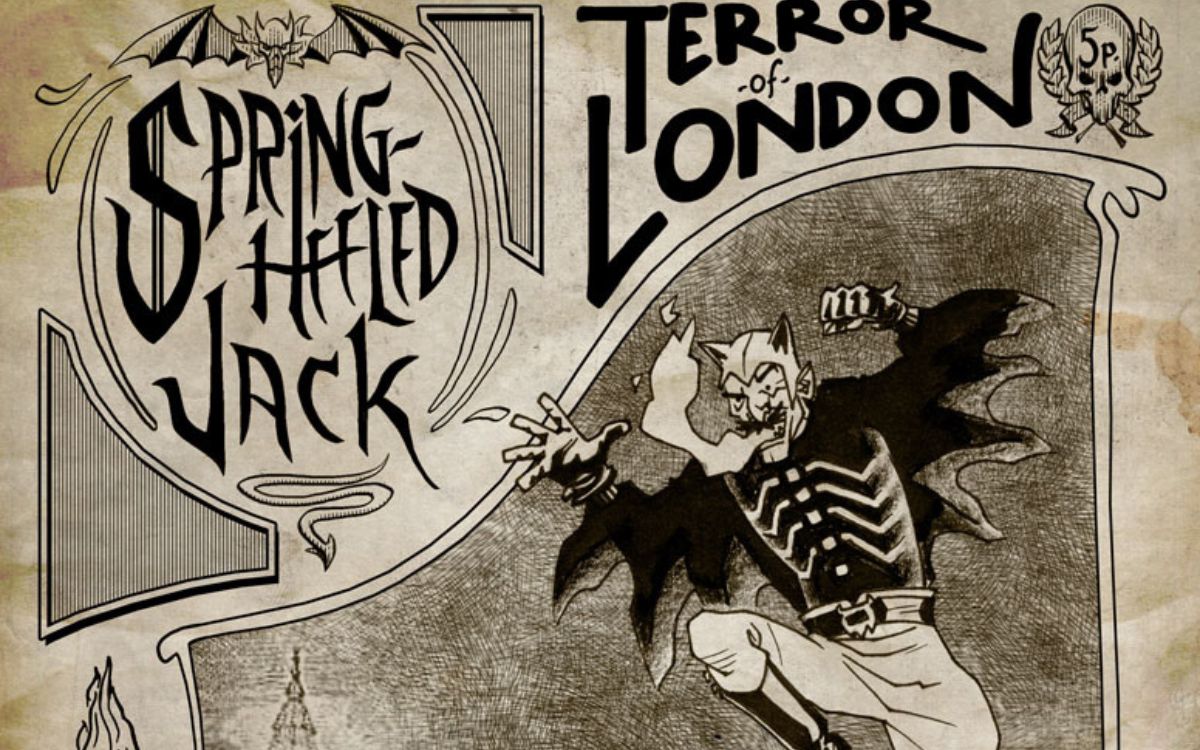JON KANEKO-JAMES takes a look at the legend of Spring Heeled Jack and says the bouncing, fire-breathing phantom was only one of a long-line of mysterious attackers

Imagine it, ladies: you’re walking late at night when a man appears from literally nowhere, raises your skirts and yells, ‘SPANKO!’
You feel the pain and humiliation as he raises your skirts and administers a thorough thrashing to your nether regions.
As you turn around he melts away again and is gone. You’ve just met a phantom attacker.
Spring Heeled Jack
Jack is perhaps the most famous attacker: he’s the one we’ve all heard of. Much earlier than Jack the Ripper, Spring Heeled Jack was a bouncing, fire -breathing phantom who jumped out on women and used his iron tipped claws to expose their breasts.
This was the account given by Polly Adams, attacked in October 1837, who gave a fantastically lurid description of her assailant to the newspapers.
The year after, the attacks continued: he attacked the Scales sisters in Limehouse, and even made an assault on a house of the Alsop sisters (again, in Limehouse) where he hammered on the door yelling, “I am a policeman, for God’s sake bring me a light, we have caught Spring-Heeled Jack here in the lane!”

This time he didn’t get his bounty of exposed jubblies, as young Jane Alsop had the presence of mind to fight back, sending him springing off into the darkness.
One of the favourite theories for Spring Heeled Jack is that he was a disguise for the Marquis of Waterford, a misogynistic nobelman who liked playing practical jokes, unfortunately the attacks continued well after the Marquis’ death in 1859, although the bulk of varified attacks happened between 1837 and 1845.
The London Monster
The London Monster was maybe the earliest attacker, and the most sadistic, more interested in cutting up and disfiguring women than tittilation.
Operating between 1788 and 1790, women attacked said they were followed by a large man who would threaten them, shout obscenities and finally stab them in the buttocks.
Other accounts said that the Monster had razorblades on his shoes, or that he hid a knife in a bouquet of flowers and stabbed women in the face after inviting them to smell the flowers. In every case the Monster melted away into the crowds, vanishing before the authorities could arrive.
A mass panic ensued, with the men of London forming a ‘No Monster Club’ that men could be part of to show that they weren’t the monster. Women were outraged that the city’s prototype police force, the Bow Street Runners, couldn’t catch the culprit.
A scapegoat was eventually offered by Anne Porter, in June 1790. She was out with her lover in St. James’ Park when she was attacked by unemployed Rhynwick Williams.
Her gentleman friend subdued Williams, and despite massive evidence to the contrary Williams was eventually jailed for six years.
Other Phantom Attackers
There were others: the Peckham Ghost who would yank women’s dresses off, the three Hammersmith Ghosts, one of whom turned out to be a cobbler, the second of whom was a farmer.
My favourite was Whipping Tom, who operated between Holborn and Fleet Street in London, in 1838.
He was the most harmless of the phantom attackers so far I’m aware: women walking in the street would be assaulted by a man who would appear behind them, raise their skirts and shout, ‘SPANKO!’ while rapidly spanking their buttocks with a metal rod.
There was very little fear of him, but local women derided the London authorities for never bringing him to justice.



The Bones of Jack is about Springheeled Jack. Two Englishmen find his remains in an old chimney and bring his legend back to life.